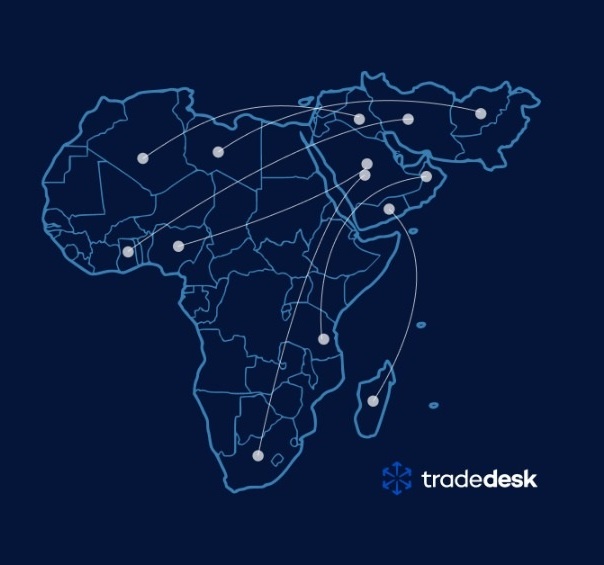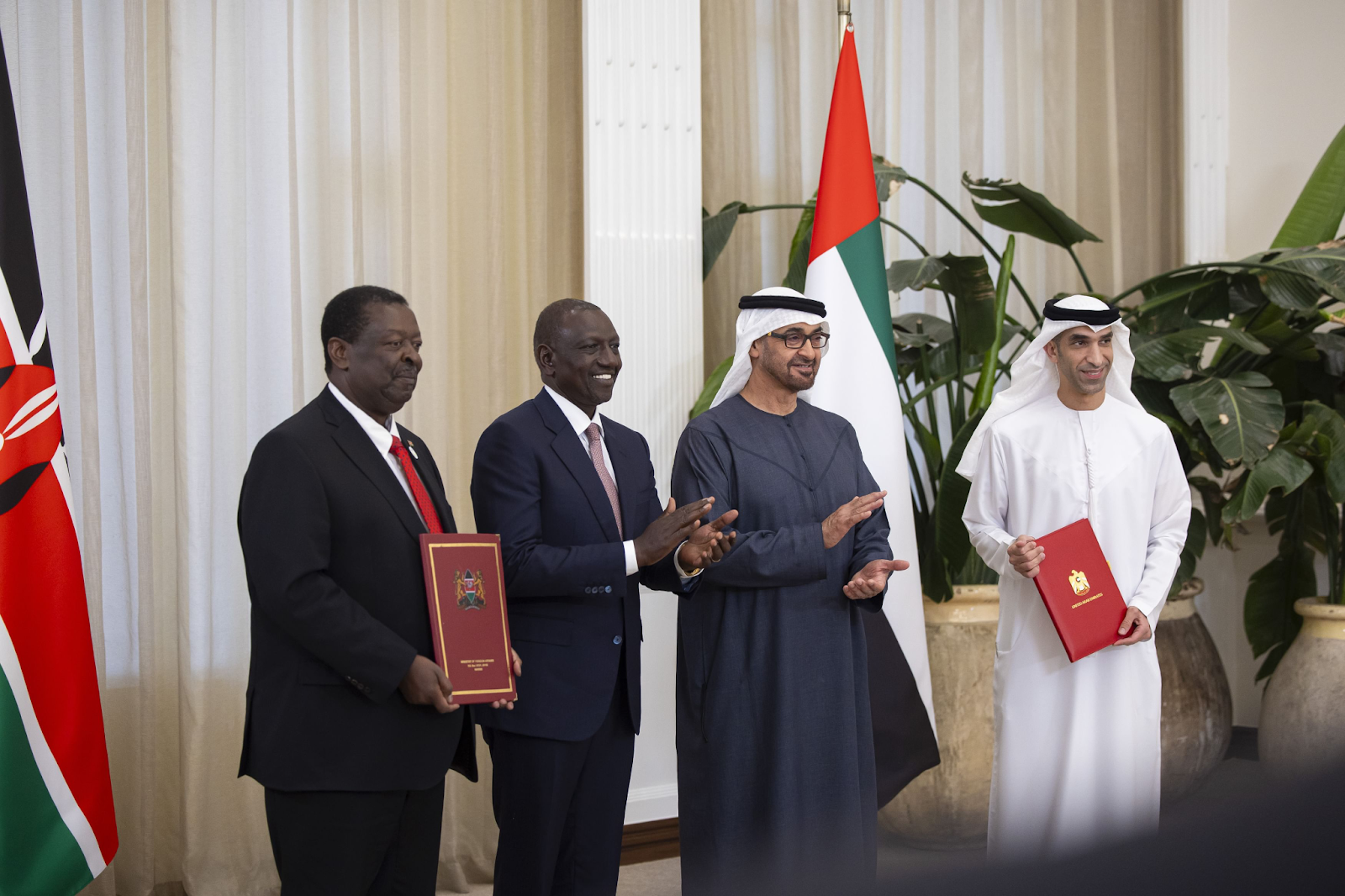Gulf-Africa Trade Corridor: Turning Global Trade Disruptions into Strategic Opportunities
Date Posted: May 06, 2025

The Trump administration’s tariff policy has been characterised by deliberate tactical unpredictability. While the threat to African exporters, particularly AGOA beneficiaries, is real and significant, the lack of predictability means that the policy landscape is subject to rapid change. Decision-makers should recognise both the immediate risks and the need for flexible, diversified trade strategies, particularly with Gulf partners, to navigate this era of global trade uncertainty.
The OECD's global growth forecast has been revised down from 3.3% to 3.1% for 2025, reflecting economic strain caused by rising trade barriers and geopolitical tensions. For Africa, these disruptions signal reduced demand from traditional markets and diminished price competitiveness, particularly in the U.S, where tariffs now vary between 10% and 14.5%. However, amidst these challenges lies a significant opportunity to reshape trade corridors between Africa and the Gulf Cooperation Council (GCC) states, leveraging existing frameworks and accelerating investments to drive sustainable economic growth across both regions.
Quantified Challenges for African Exporters
The current global trade environment presents three interconnected challenges for African exporters, each requiring strategic responses:
Reduced OECD Demand

Africa's exports to OECD countries account for approximately 24% of its global trade. With slower growth projected in major economies like the U.S. (GDP growth predicted at 1.6% for 2026) and the EU (around 1% for 2025), African exports are expected to decline by $4.2 billion annually by 2026, particularly affecting the agriculture and manufacturing sectors. This contraction in traditional markets necessitates urgent diversification of export destinations.
U.S. Tariffs and Price Competitiveness
Recent U.S. tariff policies have significantly undermined the competitiveness of African goods in several key sectors:
Textiles: AGOA-supported exports now face a 15–20% price disadvantage compared to alternatives from countries like Bangladesh or Vietnam, threatening $6 billion in annual trade value. For countries like Lesotho, where textile exports represent a significant portion of the economy, these tariffs (as high as 50%) put thousands of jobs at immediate risk.
Agriculture: South African citrus exports face a $4.50 per carton cost increase due to tariffs, reducing competitiveness against European producers and endangering approximately 35,000 jobs across the value chain. The uncertainty created by potential tariff fluctuations has already begun disrupting planting and investment decisions.
Shifting Asian Market Dynamics
While Asia now absorbs 32.1% of Africa's exports, primarily commodities like copper and cobalt, China's projected growth slowdown to around 4% in 2025 may dampen demand for these resources. This could potentially offset any gains from trade flows redirected due to U.S. tariff barriers, creating a complex calculus for commodity exporters seeking to rebalance their market exposure.
Gulf-Africa Opportunities: A $154 Billion Frontier

Despite these challenges, the Gulf Cooperation Council—comprising Bahrain, Kuwait, Oman, Qatar, Saudi Arabia, and the UAE—offers strategic alternatives for African exporters through three key collaboration areas:
Agriculture Supply Chain Diversification
The GCC imports over $53 billion worth of agricultural produce annually, with 80-90% reliance on imported foodstuffs. This dependence creates a natural partnership opportunity with African agricultural producers seeking new markets.
Redirecting African agricultural exports toward GCC markets could generate an additional $3.8 billion annually by 2030, creating a win-win relationship that addresses Gulf food security concerns while providing African producers with stable demand outside traditional Western markets.
Energy Collaboration
GCC investments in African renewable energy infrastructure are creating sustainable development pathways aligned with both regions' strategic goals:
UAE's Masdar has committed $10 billion to wind projects in Egypt, accelerating the country's clean energy transition and creating one of the world's largest wind farms.
Saudi Arabia's ACWA Power is expanding its footprint in Africa with large-scale renewable installations, including significant projects in Egypt's Suez governorate.
These investments help address Africa's clean energy infrastructure needs while allowing Gulf states to diversify their energy portfolios beyond hydrocarbons, demonstrating how strategic alignments can serve mutual interests.
Infrastructure and Logistics Investments
The Gulf's investments in African infrastructure are creating the physical foundations for increased trade:
UAE's DP World has invested $2 billion in ports across Africa (including Berbera, Dakar, and Sokhna), with plans for an additional $3 billion over the next 3-5 years.
The LAPSSET Corridor project ($50 billion), an ambitious infrastructure network in Eastern Africa, enhances connectivity between Gulf and East African markets, supporting more efficient trade flows across both regions.
These logistics investments reduce transportation costs and time-to-market for African exports, creating efficiencies that help offset tariff disadvantages in other markets and build long-term trade competitiveness.
Frameworks Enabling Collaboration
Decades of Gulf-Africa partnerships have established robust frameworks that can accelerate trade expansion:
AfCFTA Synergies
The African Continental Free Trade Area is projected to increase intra-African exports by 32% by 2035 and reduce extreme poverty by 40-50 million people. This continental integration complements GCC Comprehensive Economic Partnership Agreement (CEPA) frameworks, creating streamlined market access routes that benefit both regions and enhance overall trade efficiency.
Digital Trade Platforms
Blockchain-backed initiatives funded by the UAE aim to reduce cross-border trade costs by up to 15%, enabling small and medium enterprises to access Gulf markets more efficiently. These digital infrastructure investments address critical non-tariff barriers that have historically limited Africa-Gulf trade volumes.
Strategic Sovereign Investments
GCC sovereign wealth funds have collectively deployed over $100 billion into Africa since 2015 across sectors like logistics, energy, and agriculture. The UAE alone has emerged as Africa's largest investor, committing $110 billion to projects between 2019-2023, including $72 billion in renewable energy.
These institutional investment frameworks provide the capital foundation for sustained development of the Gulf-Africa corridor beyond immediate trade considerations, creating an ecosystem for long-term economic partnership.
Executive Takeaways
For C-suite decision makers navigating these shifting trade dynamics, three strategic priorities emerge:
Redirect Exports to GCC Markets: Prioritise agricultural and manufacturing exports to leverage tariff-free access under CEPA agreements, with particular focus on products facing competitive pressure in traditional markets affected by new tariff regimes.
Invest in Infrastructure Partnerships: Collaborate with entities like DP World to optimise logistics networks via African ports, reducing time-to-market and transportation costs for exports to Gulf and Asian markets.
Secure Funding for Growth Projects: Align development initiatives with GCC sovereign wealth fund priorities targeting high-return sectors like agritech and clean energy to access the substantial capital deployed across the continent.
Conclusion: From Disruption to Opportunity
The Gulf-Africa corridor represents a transformative opportunity amid global trade disruptions—a $154 billion frontier where strategic collaboration drives resilience and sustainable growth across continents. For policymakers and business leaders navigating the current economic turbulence, this corridor offers not just a contingency plan but a blueprint for future economic advantage.
By leveraging complementary economic strengths, existing investment frameworks, and shared strategic interests, both regions can transform short-term global trade disruptions into long-term partnerships that enhance economic resilience and create sustainable growth pathways through diversification.

_1687337514.jpg)
_1684612515.jpg)

_1666791043.jpg)
_1666790839.jpg)
_1666790690.jpg)
_1666790264.jpg)